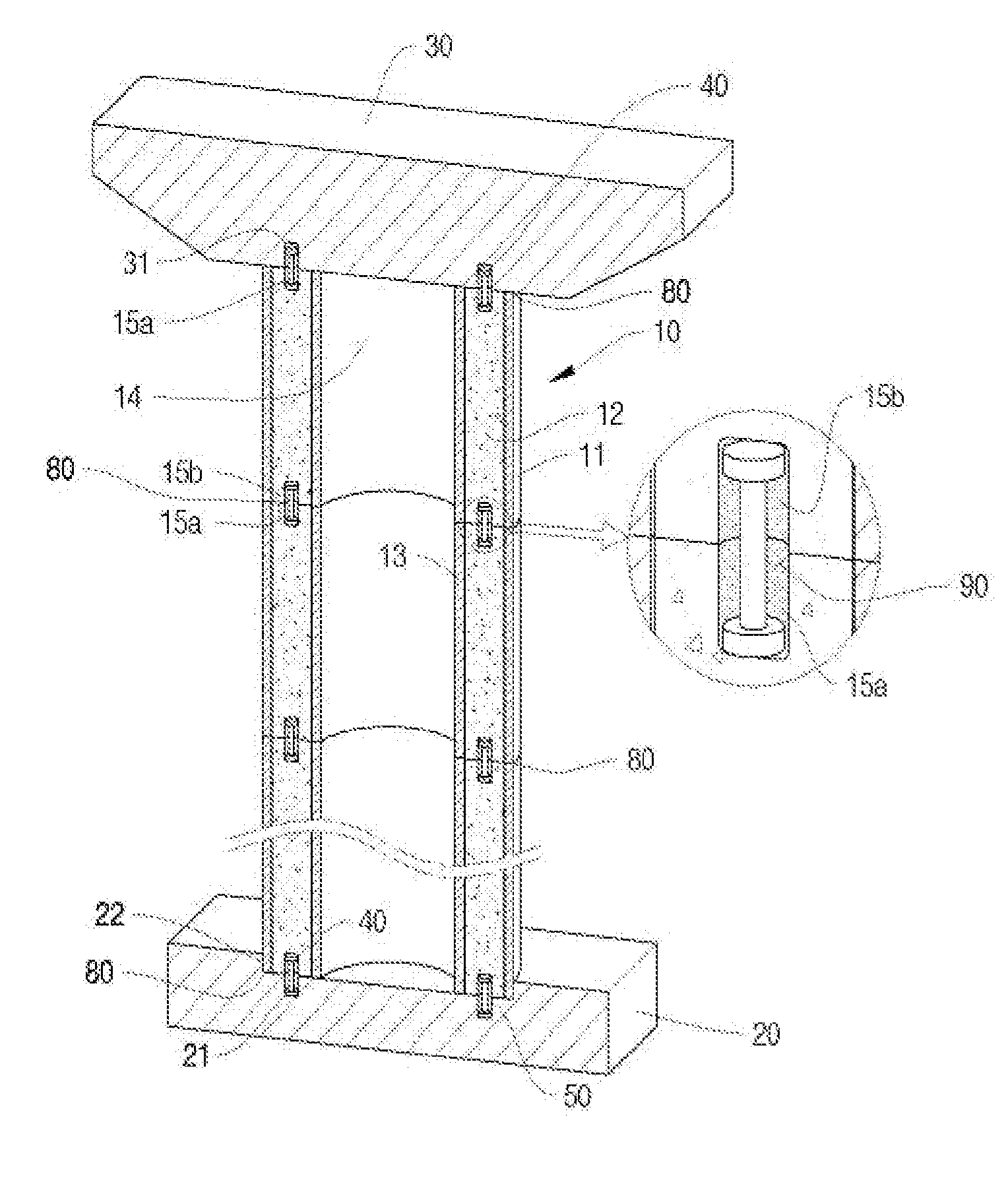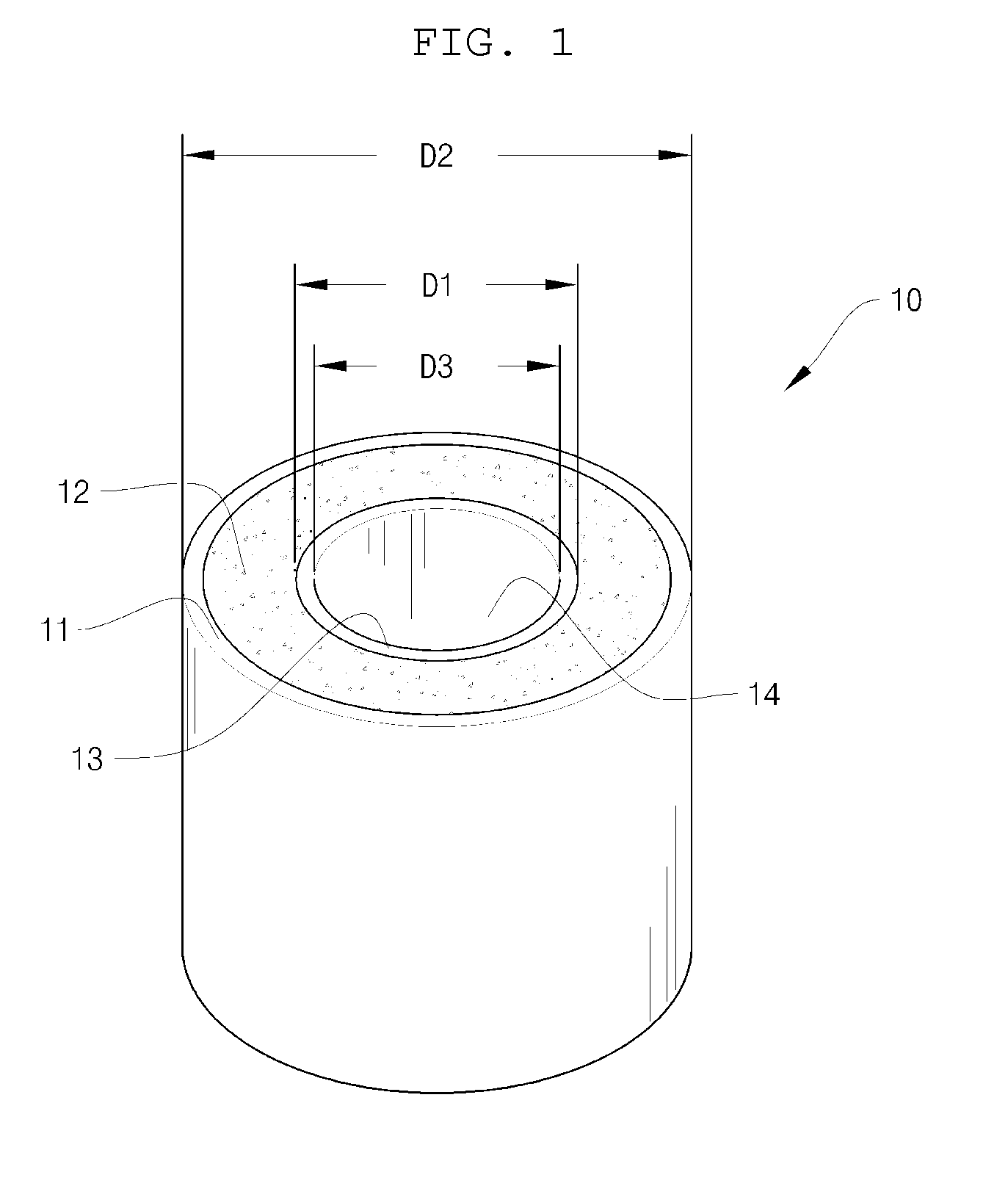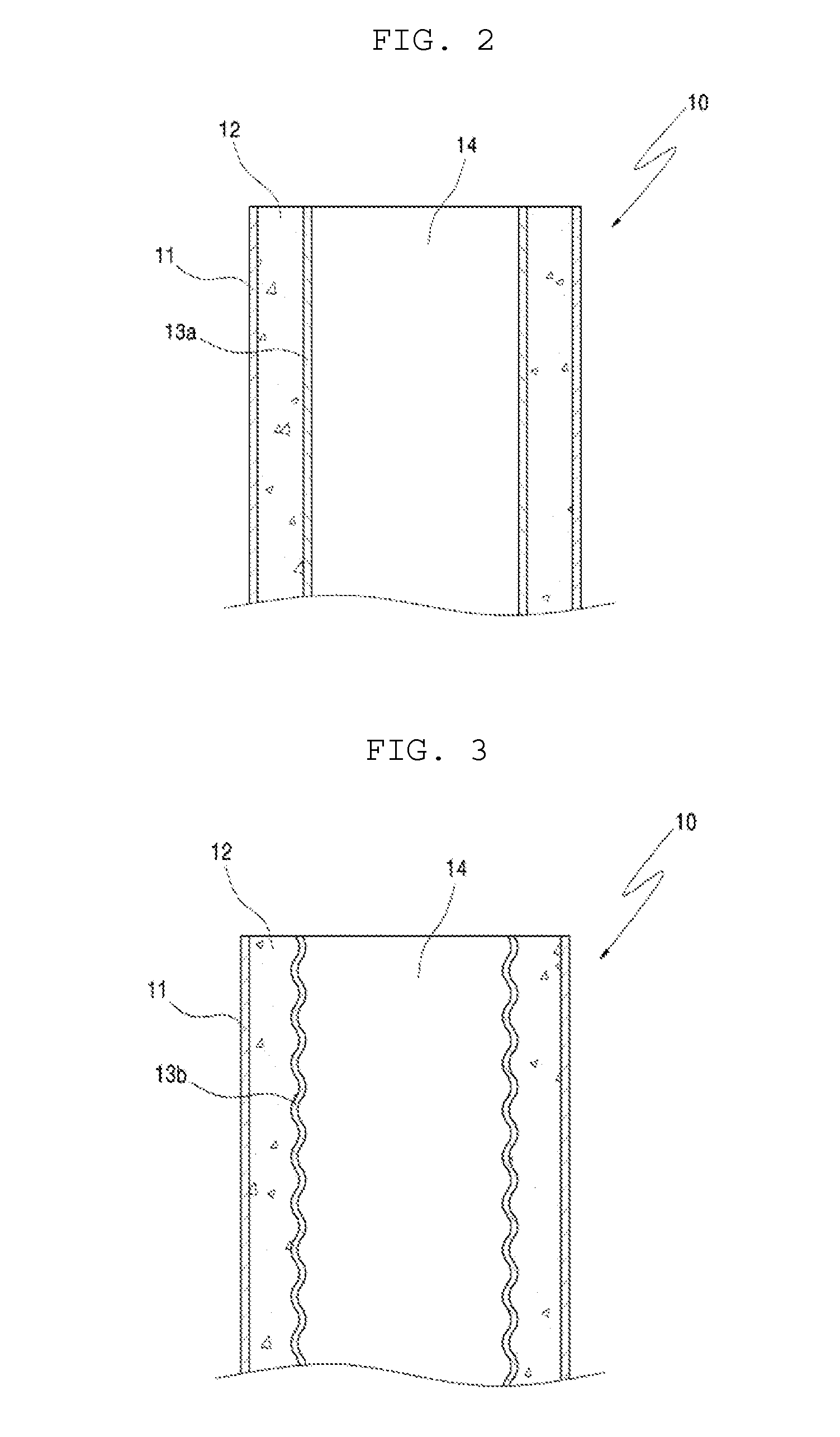Modular Column System Using Internally Confined Hollow Column Unit and Method of Constructing the Same
a column system and column unit technology, applied in the field of modules, can solve the problems of long construction period, large expense, and pier problems, and achieve the effect of convenient assembly of the units
- Summary
- Abstract
- Description
- Claims
- Application Information
AI Technical Summary
Benefits of technology
Problems solved by technology
Method used
Image
Examples
Embodiment Construction
[0043]Reference will now be made in greater detail to an exemplary embodiment of the invention, an example of which is illustrated in the accompanying drawings. Wherever possible, the same reference numerals will be used throughout the drawings and the description to refer to the same or like parts.
[0044]As illustrated in FIG. 1, an inner pipe section 13 is installed in the hollow section 14 of a concrete section 12, and thus it confines the concrete section 12. Thus, the concrete section 12 is under a triaxial compression load. Thereby, when a precast unit is fabricated, the hollow section 14 of the concrete section 12 is formed so as to reduce the self-weight of the precast unit to facilitate assembly, thereby preventing incidental brittle fracture in the cross section of the hollow section 14 of the concrete section 12. Further, the inner pipe section 13 is inserted to reinforce the resistance to bending moment as well as to reduce the cross section and self-weight of the precast...
PUM
| Property | Measurement | Unit |
|---|---|---|
| shape | aaaaa | aaaaa |
| resistance | aaaaa | aaaaa |
| self-weight | aaaaa | aaaaa |
Abstract
Description
Claims
Application Information
 Login to View More
Login to View More - R&D
- Intellectual Property
- Life Sciences
- Materials
- Tech Scout
- Unparalleled Data Quality
- Higher Quality Content
- 60% Fewer Hallucinations
Browse by: Latest US Patents, China's latest patents, Technical Efficacy Thesaurus, Application Domain, Technology Topic, Popular Technical Reports.
© 2025 PatSnap. All rights reserved.Legal|Privacy policy|Modern Slavery Act Transparency Statement|Sitemap|About US| Contact US: help@patsnap.com



